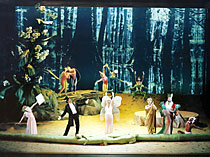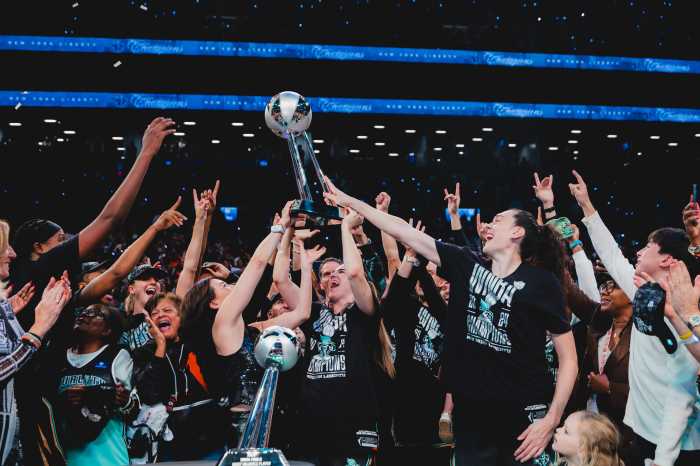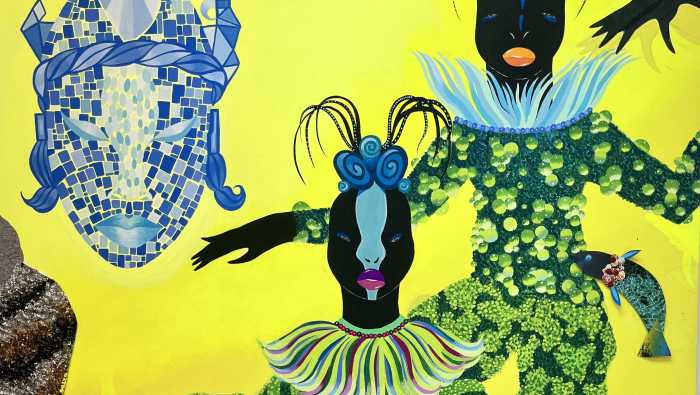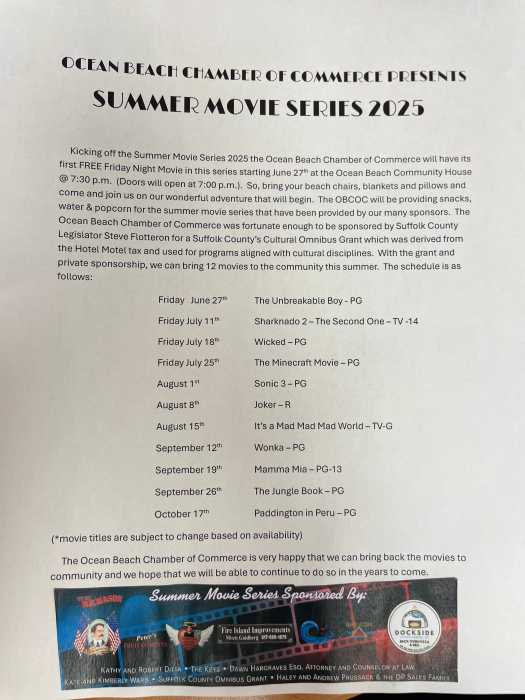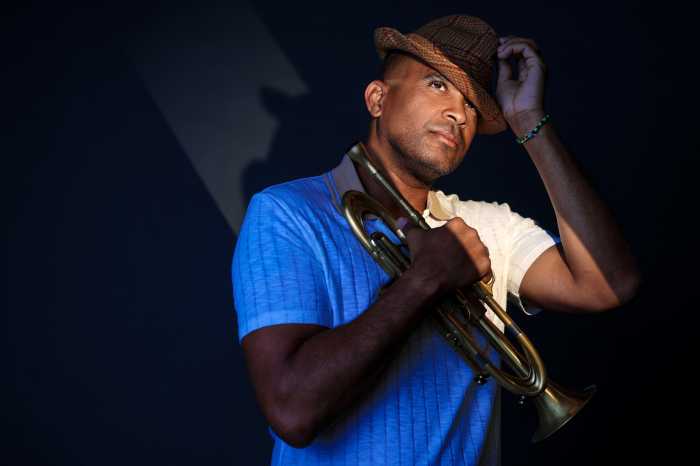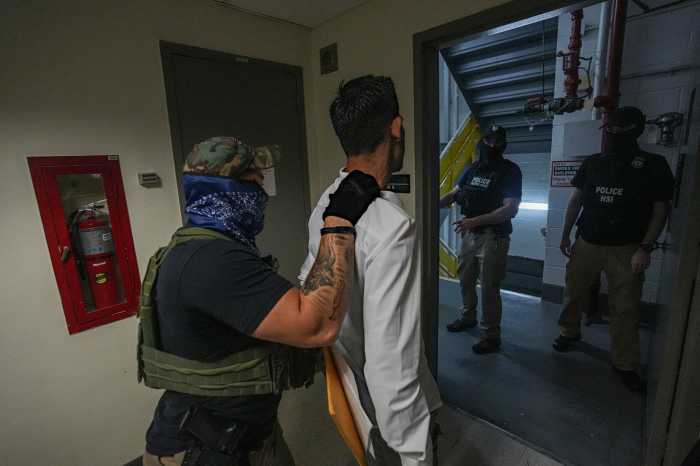Park Slope native Adrianne Lobel has made
a career out of making a scene. Or more specifically, of designing
scenes.
The 48-year-old set designer works with many of the best choreographers,
directors and composers in theaters around the world, in part
because she has the brilliant audacity to take her inspiration
for the prologue of a French baroque opera-ballet, for example,
from a terrarium on a bar overlooking the Gowanus Canal.
The restaurant bar in question is in Monte’s Venetian Room on
Carroll Street and the opera-ballet, now on stage at New York
City Opera in Manhattan through Oct. 16, is Mark Morris’ production
of Jean-Philippe Rameau’s comic opera "Platee," about
a nymph who lives in a swamp.
Morris, the Fort Greene-based director and choreographer, has
collaborated with Lobel on five productions, including "The
Hard Nut," his celebrated send-up of "The Nutcracker"
and his acclaimed evening-length dance "L’allegro, il penseroso
ed il moderato."
Although this production of "Platee" was originally
presented by the Royal Opera Festival Theatre in Edinburgh in
1997, and was last presented at New York City Opera in 2000 (in
a sold-out run), Morris hasn’t yet tired of Lobel’s set.
"It still looks great; it’s not dated and not archaic,"
said the "Platee" director and choreographer. "It’s
a perfectly excellent physical production."
"Platee" opens with a prologue featuring an assortment
of revelers in a pub. They waken one of the patrons, sleeping
on a table, and encourage him to tell them a story. What unfolds
over the next three acts is the tale of Platee’s humiliation
at the hands of Jupiter, told through the Mark Morris Dance Group’s
dancers and the singers of the New York City Opera.
Working hand in glove with Lobel’s set are spectacular costumes
designed by famed fashion designer Isaac Mizrahi, a Midwood native.
That means Platee, the swamp thing in this 18th-century opera-dance,
bears a remarkable resemblance to Sea-Monkeys, as depicted on
the packaging of the decades-old brine-shrimp-as-pets novelty
product. The personification of Folly, meanwhile, is a winged,
platinum-haired, Marlene Dietrich-like stunner.
While the libretto’s prologue by Adrien-Joseph Le Valois d’Orville
describes revelers in a vineyard, this production stations them
in a pub with the aforementioned terrarium on the bar. As the
drunks leave the pub, it darkens, and the terrarium glows with
life suggested by lighting designer James F. Ingalls. It’s the
perfect segue to Act I, which opens inside the terrarium where
the homely nymph Platee, played by the (male) singer Jean-Paul
Fouchecourt, holds court. The action is set against an enormous
branch of berries, a cave and a picture of trees in a swamp that
serve to dwarf the petty interactions of the characters.
Lobel’s inspiration for the backdrop? The pictures taped to the
back of terrariums, of course.
"You don’t associate dancing with a swamp," explained
Lobel. "There are lily pads and it’s muddy, so how am I
going to make a swamp they can dance in? They need a wide-open
space. So what’s such a place where frogs, toads and creatures
can be? A terrarium!"
The dancers in their brilliantly colored costumes slither in
and out of an enormous bowl, which also functions as a fountain,
on the stage.
Where did Lobel come up with that prop?
"I had a 106-degree fever and I was so sick for about a
week," said Lobel, who had been on a business trip in London
at the time. "I thought of my old toad’s terrarium. He had
an orange dish that I put his water in."
Coincidentally, "Platee" was first staged in Great
Britain. "We’re back in America now, but those productions,
’L’allegro,’ ’Platee’ and ’Hard Nut,’ originated in Europe at
a time when there was more money for the arts; it was not all
about how much you can cut," said Lobel, explaining that
it’s not so easy to get the funding for worthwhile projects in
the U.S. "And [Mark and I] are minimalist thinkers to begin
with – we don’t go out doing gigantic spectaculars."
"It’s a whole different system [in the United States],"
concurred Morris. "It’s not just money for productions that
is missing, there is zero arts education, which is a disgusting
tragedy." Morris, recently described by the Boston Globe’s
Richard Dyer as "the most important choreographer since
George Balanchine," said that the lack of government money
for arts and culture "absolutely ties my hands – especially
for work on a big scale."
"L’Allegro" was created in Belgium, when Morris was
director of dance at the Theatre Royal de la Monnaie in Brussels.
"The resources were unlimited," recalled Lobel. "Sadly
that production never would have happened but there and then."
Aside from being "terribly expensive," Lobel believes
working on Broadway is "not an imaginative theater, it’s
a mechanical one."
In contrast, Lobel points out the owl from Morris’ "Platee."
"Working with Mark is so heavenly. We feel the ridiculous
is the most sublime – the owl just walks off the stage,"
she said. "Any other director would be asking you for flying
machines. You watch that owl walk off the stage and it’s …
what theater should be: as simple and funny as possible. I really
like working with him because the solutions are clever and imaginative."
Lobel now lives in Manhattan with her husband, actor Mark Linn-Baker,
and their 2-year-old daughter Ruby Beatrice. And although she
says she keeps threatening to retire, Lobel is working on sets
for Tobias Picker’s "An American Tragedy" (to be staged
at the Metropolitan Opera in December 2005) and John Adams’ "Doctor
Atomic" to premiere at the San Francisco Opera in October
2005.
With both productions, Lobel is working with living composers
who are creating the works "as we speak."
"When you are working with a composer on a new piece, they
are as influenced by you as you are by them. So that’s true collaboration,"
she said.
Lobel gets her inspiration from many sources; she claims that
when she begins working on a set, "I can’t even draw without
music; music moves my hand." As a jumping-off point for
"An American in Paris," which Lobel is designing for
New York City Ballet, she is referencing works by Picasso and
Braque. Meanwhile, for the swamp vegetation in "Platee,"
Lobel did her research in a pet store.
"That poor plant is based on a plastic plant that I believe
I got at Petland," said Lobel. "You know, to keep your
pet company. Nothing is natural on that stage. The dish is an
actual replica of my pet toad’s water dish, blown up many times.
He never knew his dish would be a fountain in a baroque opera.
You use everything. Maybe out of desperation – or inspiration."
New York City Opera’s production of
"Platee" will continue at the New York State Theater
(65th Street at Broadway in Manhattan) through Oct. 16. Performances
are Oct. 10 at 1:30 pm, Oct. 14 at 7:30 pm and Oct. 16 at 8 pm.
Tickets are $27-$115. For more information, go to www.nycopera.com
or call (212) 870-5630.


